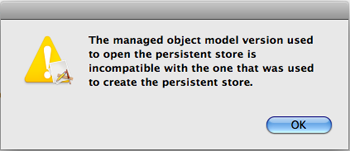Is Core Data a black box?
Reading this post from Theocacao this morning got me thinking about using Core Data in my first Mac app that I’m currently working on.
Five years working with .NET has taught me some valuable yet tough lessons–the black box approach to writing applications can seem like a perfect shortcut, but can quickly turn into the bane of one’s software development existence.
When I use the term black box, I am referring to employing a methodology (usually with data access) that is provided by the platform vendor (namely Microsoft, Apple, etc.) that are there to make the developer’s job faster and easier.
In theory, black boxes do what they are intended to do. In fact any and all of the examples and tutorial videos you might find on the Microsoft website show how to use these tools and they make it look very quick and easy.
I’ve found this to be true in the Core Data examples I’ve seen as well. What’s interesting is the fact that the data sets the examples work with are always very small. This matters a great deal and here’s why.
In the Microsoft world, you can build data models using a model designer that maintains XML code behind the scenes for you. You simply specify the query you want to use to obtain the data through a TableAdapter and then you are able to connect the model to your application without writing a stitch of code. It is “all done for you”. The problem is that it doesn’t scale well. After you’ve accumulated a large number of objects in the designer, the first thing you notice is that the interface becomes sluggish. It’s still useable, however, I know I’ve got a lot more that I need to add to the model before the app is going to be finished. It could get pretty ugly.
What’s worse and more critical to the application, however, is the unknown problems that the black box happily obscures from the developer’s view. I had developed my application using this black box model in Microsoft and had to change the database to a new empty database with the *exact same schema* and when I went to re-run the application, it just stopped working altogether. I could no longer add records to the database using the interface I had developed.
As I looked around the Internet, I found this to be a fairly common problem. I found myself having to frantically and immediately break out of the black box and return to square one–writing my own data access code–to get the app working again. It was a nightmare that taught me that I need to avoid the black boxes.
So, here I am now embarking on developing my Mac programming skills and the first thing I’m faced with is whether or not I should go the black box route that Core Data seems to be.
I say seems because I am new, so please don’t flame me over that comment. If it is not a black box methodology, simply explain to me how that is so. Meanwhile, I’m going to assume that it actually is a black box method and step into it very cautiously. I like Core Data quite well and it really seems to be pretty powerful. However, I can’t help but wonder about scalability and running into the same issues I had using Microsoft’s dev tools. I’ll continue to document my progress and findings here.
